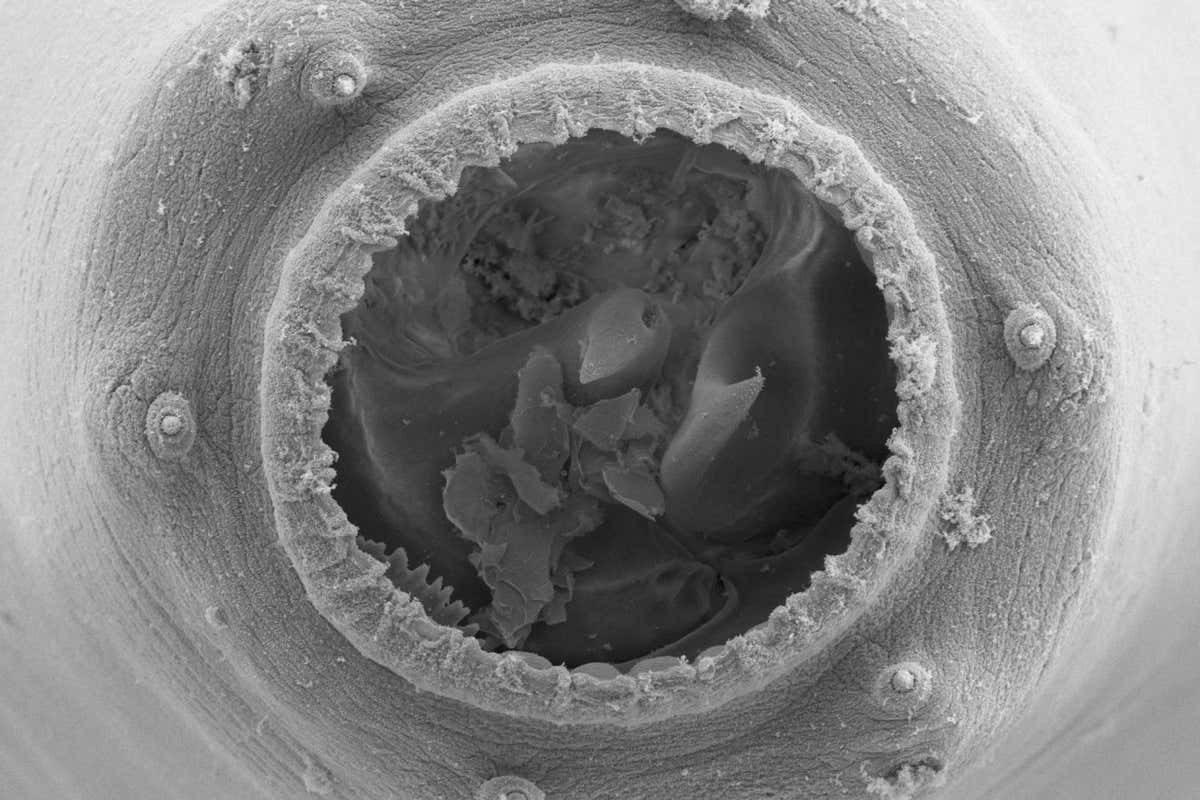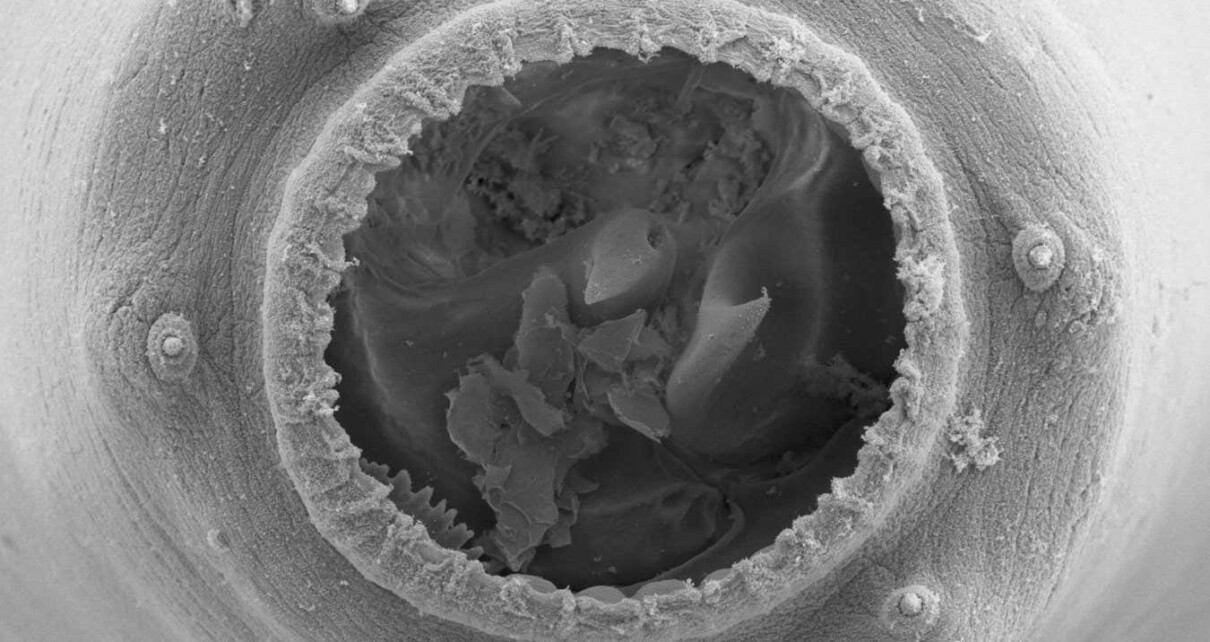[ad_1]

The enormous mouth of a tiny nematode worm
Sara Wighard and Ralf Sommer / Max Planck Institute for Biology Tubingen
Tiny soil worms called nematodes usually feast on bacteria or algae, and have tiny mouths to suit their diet. But give a baby nematode some fungus and its mouth can as much as double in size – giving it the ability to cannibalise its companions.
That is what Ralf Sommer at the Max Planck Institute for Biology in Tübingen, Germany, and his colleagues found when studying the development of the predatory soil nematode worm Allodiplogaster sudhausi. When the young worms were raised on Penicillium fungus and cheese, some of them grew up into huge-mouthed cannibals. “We were blown away,” he says.
The team knew of other mouth shapes found in this species that arise from different diets – nematodes that feed on bacteria have narrow mouths and those that eat a nematode species much smaller than themselves have mouths that are a bit wider. But this extreme variant, which the researchers dubbed the “teratostomatous” or Te morph, hadn’t been documented before.
When Sommer and his colleagues investigated the genetics underlying these different mouth shapes, they discovered that all three were controlled by the same sulfatase gene. But its activity only seems to result in a monstrous, gaping maw in A. sudhausi. The species’ full set of genetic instructions was duplicated very recently in its evolution, says Sommer, so it is possible that doubling of gene pairs facilitated the origins of the nematode’s enormous mouth.
A fungi diet is low in nutrients, and the team found more Te morphs in high-density conditions, so the researchers think the Te morph and accompanying cannibalistic habit could have evolved as a response to the stresses of starvation and crowding.
Nicholas Levis at Indiana University notes that we see a similar phenomenon in some other species. For instance, the tadpoles of spadefoot toads and some salamanders can develop into cannibalistic carnivores depending on environmental conditions, says Levis.
But even in those instances, the animals often avoid eating their kin. The Te nematodes don’t discriminate and will devour genetically identical neighbours – a “striking finding”, says Levis, that might point to the developmental strategy being “truly desperate”.
“The discovery… makes me wonder how much more diversity there is in nature than what we see,” says Levis. “How many other hidden ‘monsters’ are out there waiting to be found under the right environmental conditions?”
Topics:
[ad_2]
Source link




